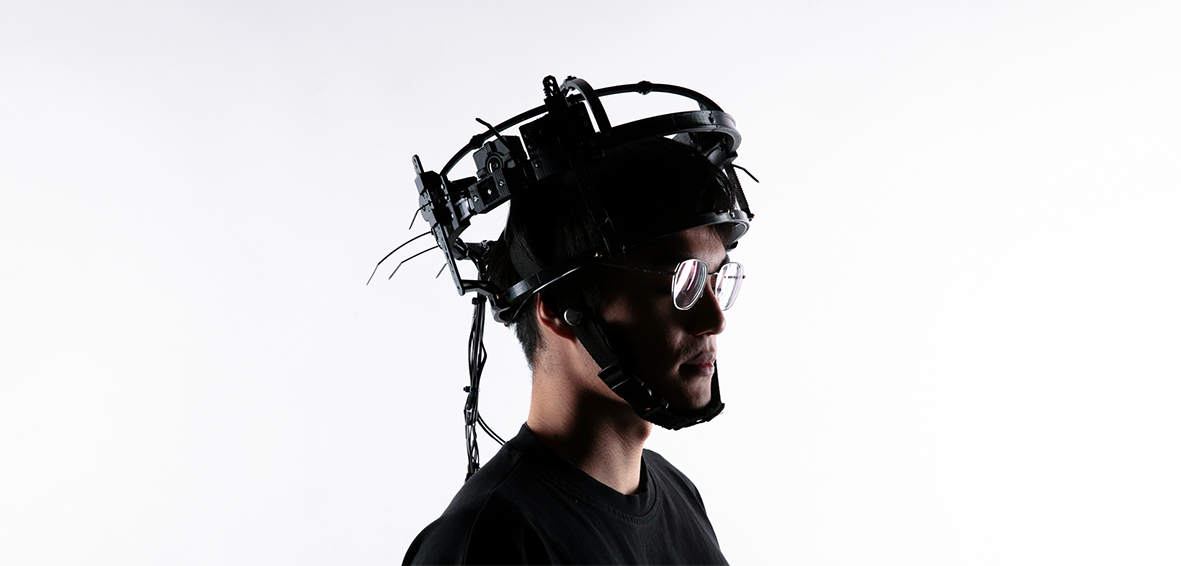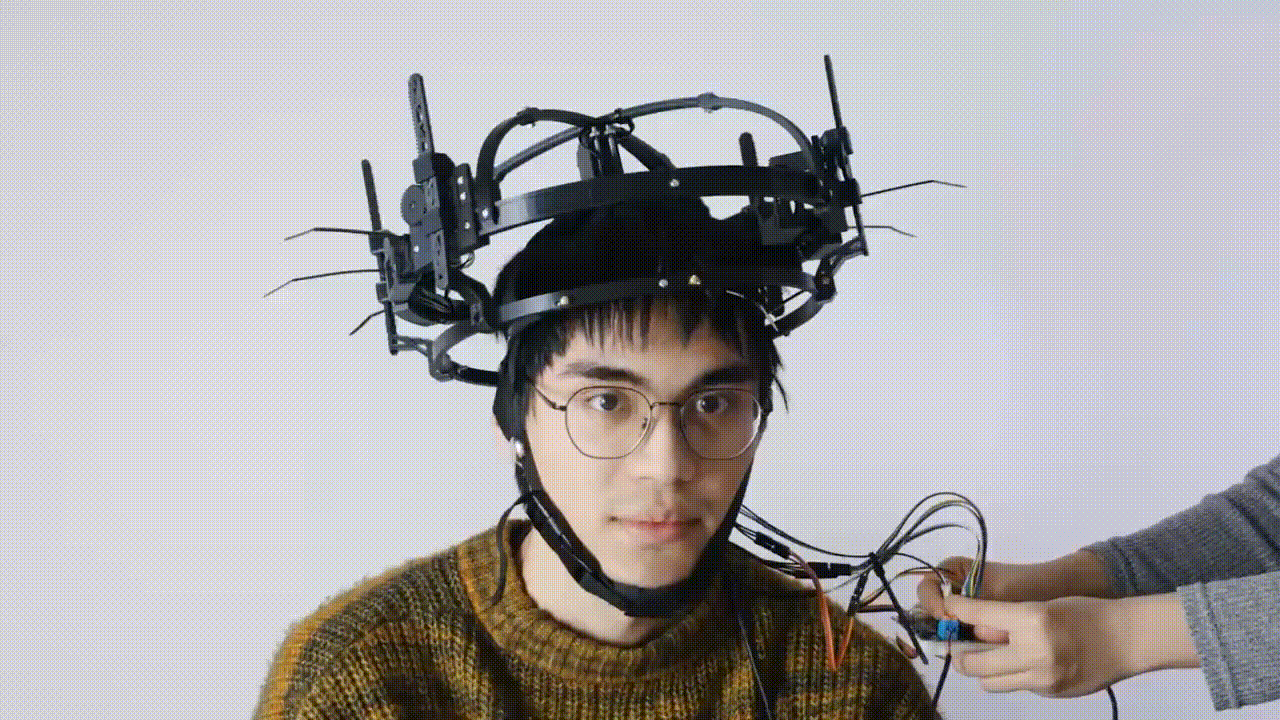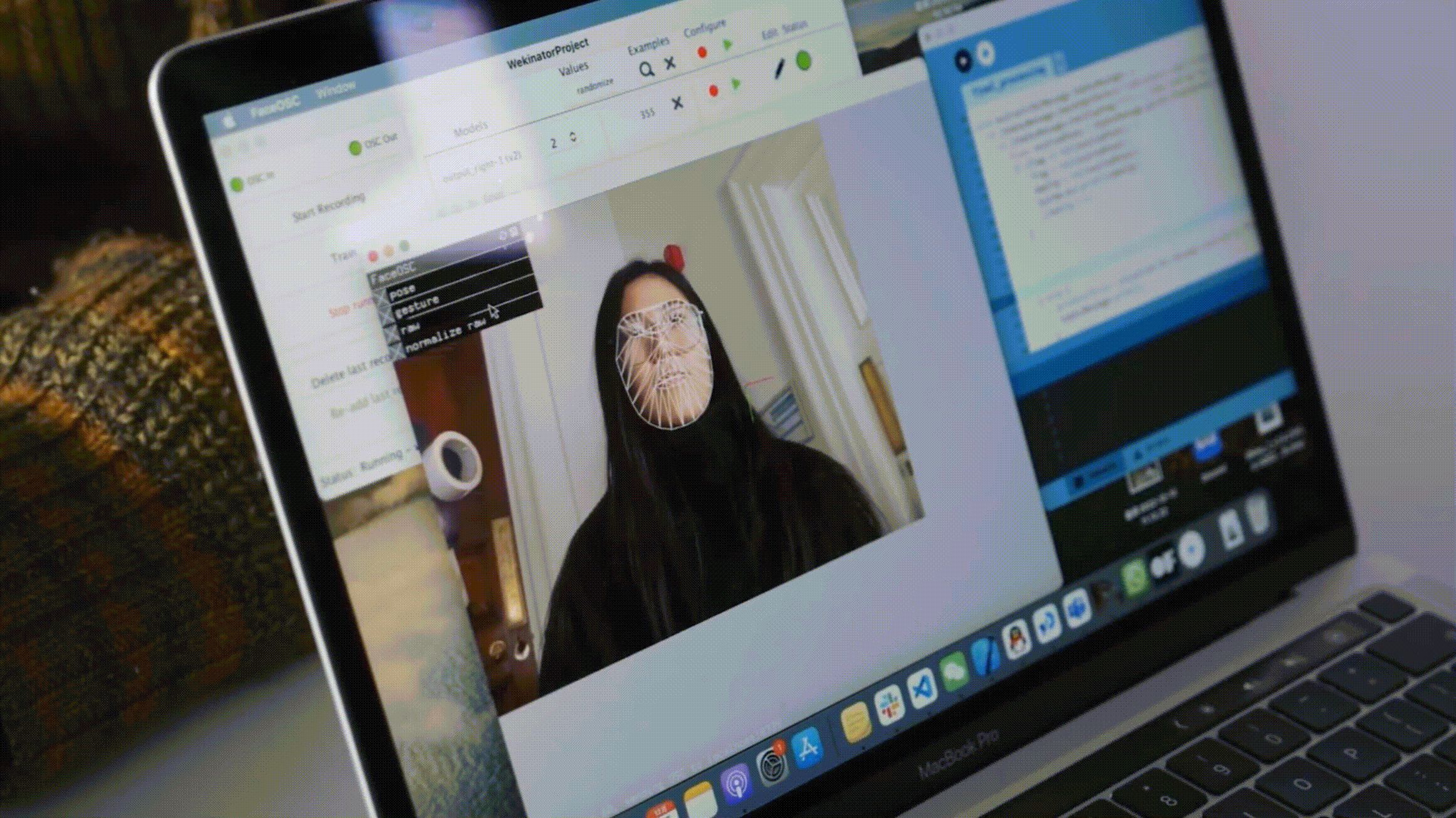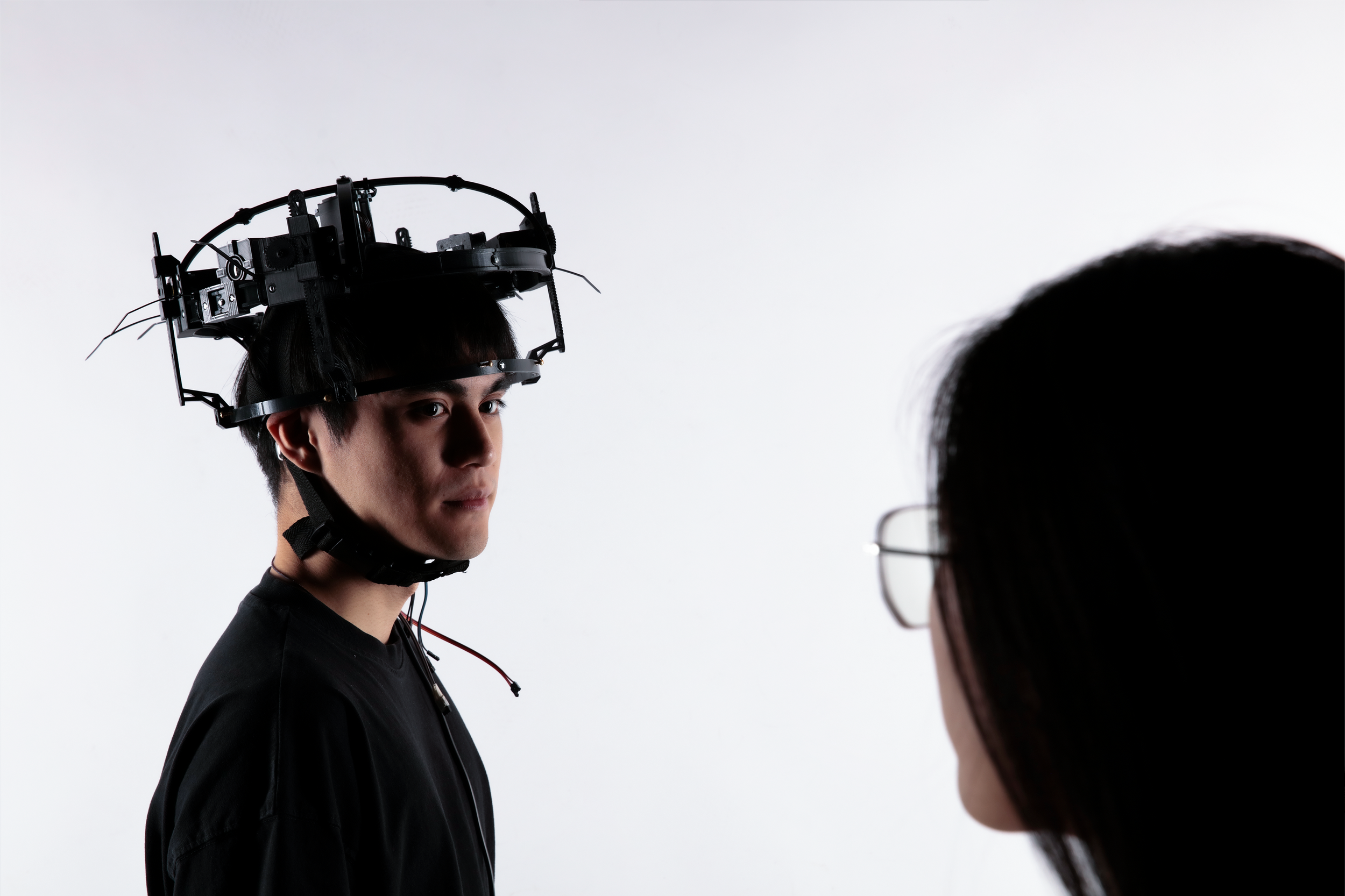
Tentacle: Aha, tingle moment!
啊,感觉来了!Tentacle is a human sensory expander that enhances ‘the sixth sense’ of perceiving others' emotions.
It utilises machine learning to capture and interpret facial expressions of people around. When it detects unusual emotion such as yawning or sadness, it triggers a subtle force exerted on the user's head through a mechanical structure, unconsciously compelling the user to turn their head and pay attention to the person in need of care.
Tentacle
explores the new demands and future evolution of human senses in adapting to the information age. In a time when individuals are increasingly self-focused and the emotional connections between people in the real world are weakening,
Tentacle
leverages its digital analysis capabilities and subtle motion to reconstruct the hierarchy of importance, emphasising the significance of emotional value in physical interpersonal interactions.
Context
The diverse environments in which different organisms inhabit, their perception requirements also vary. For example, Pigeons can perceive magnetic fields, while rays can sense electric fields. Throughout the vast expanse of nature's evolutionary process, these organisms have acquired diverse sensory experiences to better adapt to their respective environments. However, the rapid advancement of information technology has outpaced the evolution of human physiological functions, leaving individuals struggling to cope with the ever-changing lifestyle, rendering their response uncontrollable.
What new sensory abilities do humans need to adapt to modern life?
What new sensory abilities do humans need to adapt to modern life?


It was observed that the process of migration to the digital world has gradually diminished people's attention, perception, and connection to those around them in the physical realm. In this project, human emotion perception was focused on through 3D design and digital technology. How might we create a sense that allows people to more easily notice other people's emotions?
Inspiration
Simulating the "sixth sense" with this kind of force is effective because it is not coercive but rather subtle and unconscious.


The direction and magnitude of pressure and shear forces that would unconsciously trigger the feeling to turn the head in a specific direction was studied and determined. It was found that three touch points of forces were needed to trigger the effect. Among them, the position (left/right) of the front touch point decides the turning direction of the head. After multiple tests and iterations, the feeling was stimulated through designing and assembling a movable headgear.
Tentacle


Wekinator machine learning program and FaceOSC were used for facial expression recognition training. Yawning and sadness were specifically trained.

To achieve a 270-degree field of view, two cameras were Integrated on each side. When the cameras detect abnormal emotions in the surrounding individuals, signals are sent to an Arduino board, which controls movements of the mechanical structure. As a result, users feel to turn their heads due to the subtle forces applied.



Team Members
︎
Shaoyu Wang | Ziqi Fang
Shaoyu Wang | Ziqi Fang